September 3, 2022 – North Country Honor Flight #41 Biographies
Thank you to Janet Duprey, Honor Flight Director of Programs, for compiling and providing these biographies.
Bios Flight #41 – September 3, 2022
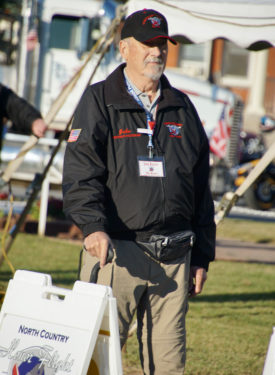 John Aldous
John Aldous
U.S. Army 1967-1970 Vietnam
After basic training, John attended Counter Intelligence Agent School in Maryland. In Vietnam in 1968, he was in a jeep accident and spent weeks in a hospital near the South China Sea.
John was assigned to the Studies and Observation Group, known as SOG. This was a highly classified, multi-service U.S. special operations unit that conducted covert unconventional operations in Vietnam, Laos and Cambodia. John participated in numerous night flights hunting down Vietcong in helicopter gunships and B-52s going throughout Vietnam to different outposts flying over a lot of ground.
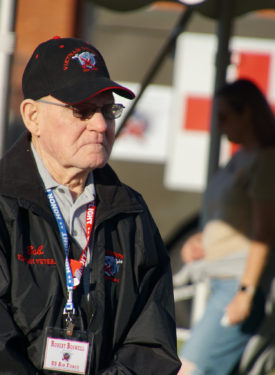 Robert Boswell
Robert Boswell
U.S. Air Force 1966-1992 Vietnam
In charge of Aircraft Maintenance Fuel Systems, Bob said the C-130 planes had fuel tank fires. Bob pulled an airman, almost dead from fumes, out of a tank. An engineer, 1st Lt. Masterson and Bob went to Alaska to study fuel tank fires. They removed the reticulated foam, and using a protractor, the Lieutenant determined pilots could not take off at more than a 17-degree altitude angle. Fires were eliminated. Great job done, and lives saved.
Bob was stationed at 9 Air Force Bases throughout the States and overseas. Plus three assignments at Plattsburgh Air Force, where he retired after 26 years of service to our Country.
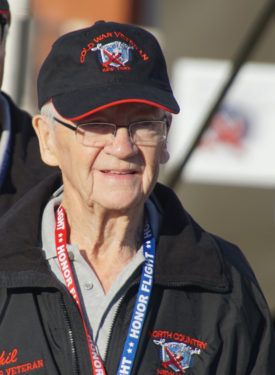 Philip Davis
Philip Davis
U.S. Marine Corp 1956-1958 Cold War
Thirty guys from Malone, the Adirondack Platoon, went to Albany to enlist. Phil’s buddy failed the test and went home. In New York City, 400 recruits boarded a train to Beaufort, South Carolina for basic training.
A Military Policeman, Phil patrolled the perimeter of the Naval Weapons Station at Yorktown, Virginia. They would transport missiles onto barges that were loaded onto ships. It took a day and a half for them to go down and back to Base.
On January 7, 1957, 6 inches of snow brought everything to a standstill. Use to 4 feet of snow, Phil found it amusing that the city plowed the Base that had no plows.
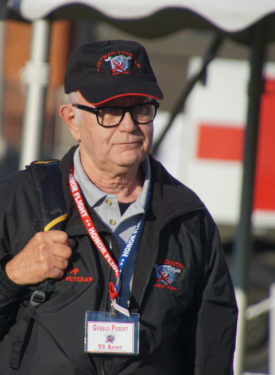 Gerald Parent Veteran Guardian for Philip Davis
Gerald Parent Veteran Guardian for Philip Davis
U.S. Army 1966-1968 Vietnam
A Hawk Missile Launcher Crewman, Jerry participated in launching a Hawk Missile at White Sands, New Mexico. He said he’s never seen anything move so quickly getting 2 miles down range.
Jerry spent most of his tour in Germany. General Westmoreland arrived next door at the Nike Hercules Nuclear site. Soldiers were directed to have everything spotless should the General stop in. They were nervous; no passes given and relieved the General didn’t visit.
On Christmas Eve, Jerry decided to call home. At a train station phone booth, the operator asked if he had a reserved line. He did not and was told it takes 12 hours to get one.
No Christmas greetings to his family.
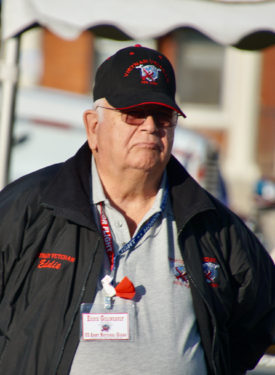 Eddie Gelineault
Eddie Gelineault
U.S. Army National Guard 1966-1969 Vietnam
After basic training at Fort Dix, Eddie went on to Camp Johnson in Vermont and he was assigned to the 131st Engineer Company.
In Vietnam, Eddie was stationed in the Central Highlands, making roads covered by muck and mud from a quarry next to the base. A good part of working in a Construction Battalion was having building materials nearby. Bridge ties made great barriers as they backfilled dirt four feet deep, making them impenetrable.
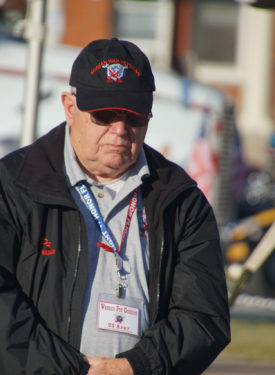 Warren ‘Pat’ Gordon
Warren ‘Pat’ Gordon
U.S. Army 1955-1957 Korean
Pat was in Army Administration as an IBM Operator. He was stationed in hot, hot Japan. It was humid except where the IBM Collators, Interpreters and Reproducers were. They had an air conditioner.
Japan was still dangerous. Pat said they were shot at and there were kidnappings and obvious anger about World War II.
Seeing Hiroshima was traumatic. Ten years later, there were still bombs and various remnants; people with deformities were very prevalent.
Pat says all people should go in the service!
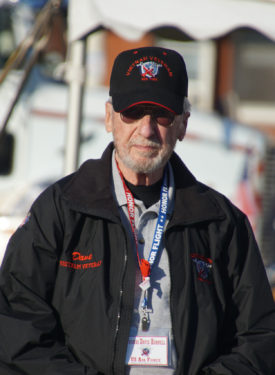 Thomas ‘Dave’ Hornell
Thomas ‘Dave’ Hornell
U.S. Air Force 1963-1984 Vietnam
Dave joined the Canadian Army at 17; At 19, he moved on to the Canadian Air Force and trained for Ground Control Radar above the Arctic Circle. He didn’t want THAT. Dave settled in with the U.S. Air Force, where he served 22 years.
In 1968 a General learning Dave was Canadian with the U.S. Air Force assigned Dave to the Army 101st Airborne Division, Vietnam.
Returning to the Air Force, Dave went up the ranks to Weather Station Operations Supervisor, providing weather support to bases across the country, the White House, Camp David, Joint Chiefs and heads-of-state.
We knew Dave would bring good weather for today’s flight.
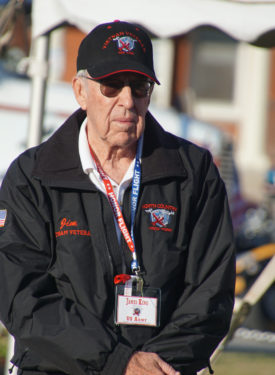 James King
James King
U.S. Army 1964-1966 Vietnam
Assigned to the 7th Infantry Division, Combat Engineers, Jim was among 2,500 troops for two weeks in rough waters heading to Korea. Jim, an electrician, went to Camp Casey, about 40 miles north of Seoul.
One hot day, and despite Jim saying it was not a good idea, a Lieutenant ordered Jim to shut down a 60-Kilowatt generator. Soon an upset Major approached and told Jim to restart the generator. The General was in the middle of a briefing and NOT happy. Back at base, the Major apologized for yelling at Jim and asked if there was anything he could do for him. Quickly, Jim said, “It’s hard to lay cable with an M-16’ and could he get a 45 pistol?” Jim got the pistol; the Lieutenant got the M-16.
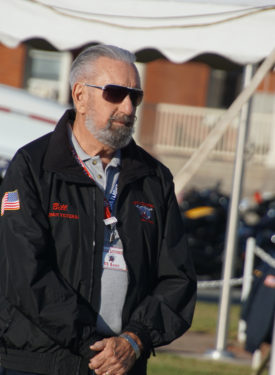 William Letourneau
William Letourneau
U.S. Army 1965-1971 Vietnam
Bill was assigned to the 12820 Combat Engineer Battalion, which played a significant role in supporting the U.S. and allied forces in Vietnam. They built bridges, roads, helicopter pads, and buildings as large as football fields to repair tanks.
Bill said they finished building a bridge and went back to the barracks. Two days in a row, the Viet Cong blew up the bridges overnight. The Green Berets were called in and the bridges remained built.
Bill and his buddies were eating lunch sitting on a bank. Bill saw something shiny and recognized a landmine as they all backtracked to safety. A C-4 plane blew up the landmine. If he hadn’t noticed the landmine, Bill wouldn’t be with us today. Glad you’re here.
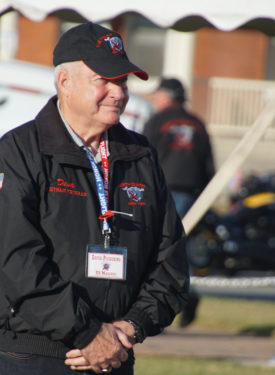 David Pickering
David Pickering
U.S. Marine Corps. 1966-1968 Vietnam
After high school graduation, Dave entered the Marine Corp. At 19 years old he was in Quang Thien, South Vietnam, attached to the 3rd Battalion, Fifth Marine Division. Dave was shot in the back during a Viet Cong ambush in a rice paddy. Two-thirds of the company were killed, including one of his buddies standing 10 feet from him.
Dave was taken to a Vietnam hospital and the next day flown to a hospital in Japan where he was treated for his shoulder wound.
Dave, an MOS 0311 Infantry Rifleman, received a Purple Heart and several other medals in recognition of his battle wounds and bravery.
Dave has attended our ceremonies as an Honor Guard since we started, and we are delighted to have him on this flight.
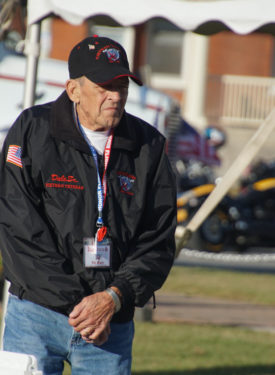 Dale Robart, Sr.
Dale Robart, Sr.
U.S. Navy 1970-1976 Vietnam
Dale was on board the Destroyer USS Damato when he received the “Blue Nose’ by crossing the Artic Circle. Wearing a jacket in the boiler room was a necessity.
At Guantanamo, Dale said there were armed guards from both sides. Dale said no one could go off base and Cuban help lived on Base.
The Mediterranean cruise made it all worthwhile.
Dale climbed up the Main Mast of the ship to get a Commissioning pendent. The ship’s Commander said, “If you’re dumb enough to go up there, you can keep it.”
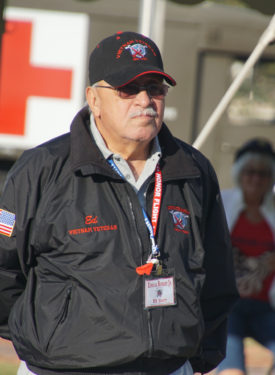 Edward Robart, Jr.
Edward Robart, Jr.
U.S. Navy 1968-1988 Vietnam
Ed served two years in Vietnam. He was then called from Vietnam to Korea on an expeditionary force.
On the USS Ranger, the sound of bullets hitting the deck from the M-16s was harassing. The Phantoms flew in and quickly took care of the M-16s.
Ed sailed the world on seven ships: the USS Kitty Hawk, Midway, Coral Sea, Saratoga, Ranger, Lexington, and Constellation. Ed received many medals and commendations for his 20 years of service to our Country.
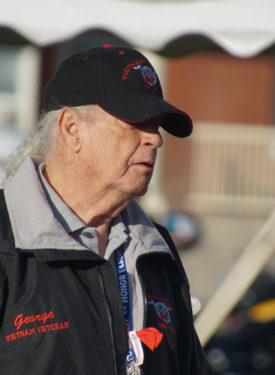 George Silver
George Silver
U.S. Army 1960-1963 Vietnam
George was assigned to Company “C” 5th Special Forces Group; and 1st Special Forces 3rd Division. George trained as a Special Forces Medical Technician. He also received training as a Jump Qualified Parachutist jumping out of several different planes and helicopters.
During his tour in Vietnam, George was in the Tay Ninh Province, close to the Cambodian Border and near the infamous Ho Chi Min Trail.
Arriving at Fort Benning, George was assigned to the 101st Airborne Special Experimental Platoon. The French had developed a Wire Guided Missile System. George said the program didn’t work, but it was a lot of fun.
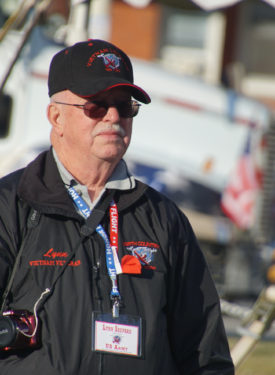 Lynn Shepard Veteran Guardian for George Silver
Lynn Shepard Veteran Guardian for George Silver
U.S. Army 1968-1971 Vietnam
Lynn was assigned to 1st Field Forces, 7th Battalion, 13th Army.
During the TET Offensive, Lynn provided ammunition and supplies to the field battalions. While on a munitions convoy, their unit was ambushed by the Viet Cong, who attempted to take out the radio command vehicle to break communications and take control of important Army communications equipment.
Lynn thought he was stung by a hornet, but it was a glass fragment that struck him when the vehicle’s driver-side mirror was hit by enemy weapons fire.
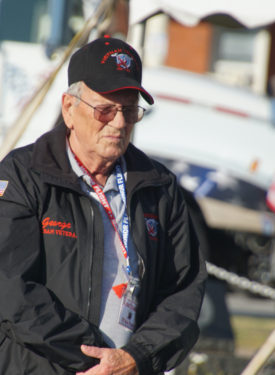 George Tallman
George Tallman
U.S. Air Force 1968-1988 Vietnam
George, an Environmental Medicine Technician, began his military career as a food inspector. He checked chemicals on planes to ensure there were no communicable diseases.
George had the honor of flying on Air Force -1 with President Richard Nixon. George said the worst country he was assigned was Turkey and the best was Germany.
When George’s father died, his mother couldn’t raise all their children. Five families saved him. A cocky teenager at the time, the Military took care of that! George is most proud of staying with the Air Force for 20 years. He retired from Plattsburgh Air Force Base with several medals and commendations from his 20 years of service to our Country.
Posted: September 8th, 2022 under General News, Northern NY News, Peru News, Peru resident news/accomplishments, Peru/Regional History, Veterans' News.
